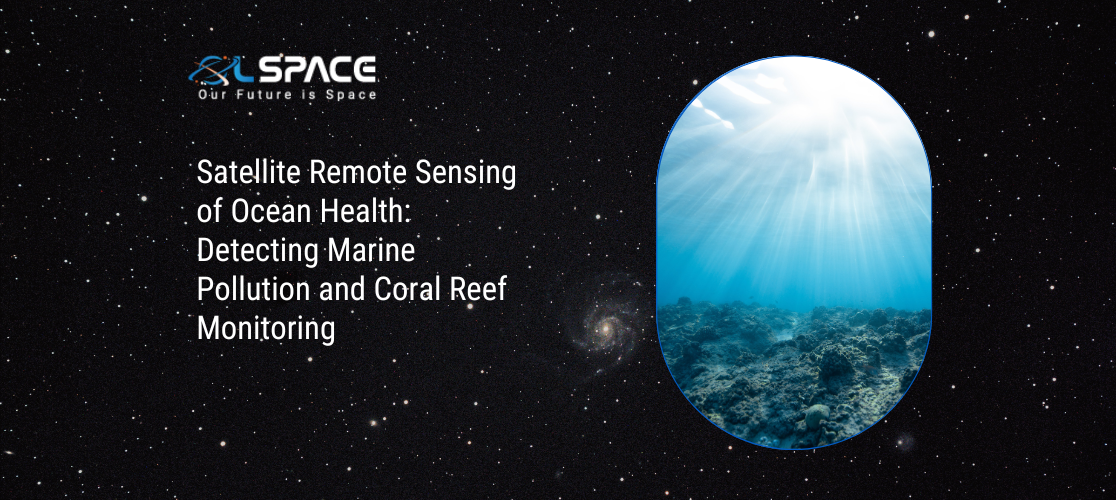01 August 2023
Satellite Remote Sensing of Ocean Health: Detecting Marine Pollution and Coral Reef Monitoring

Satellite remote sensing has emerged as a powerful tool for monitoring and assessing the health of our oceans. With marine pollution and coral reef degradation becoming pressing environmental issues, satellite technology plays a vital role in providing valuable data for effective management and conservation efforts. In this article, we will explore how satellite remote sensing is utilised to detect marine pollution and monitor coral reefs, highlighting its significance in safeguarding marine ecosystems.
Detecting Marine Pollution:
a. Oil Spills: Satellites equipped with synthetic-aperture radar (SAR) can detect and monitor oil spills in the ocean. SAR sensors can identify the extent of the spill, aiding authorities in responding quickly to mitigate environmental damage and assess the impact on marine life.
b. Harmful Algal Blooms (HABs): HABs can release toxins that harm marine life and affect human health. Satellites equipped with hyperspectral sensors can detect and track these blooms, providing early warning systems to coastal communities and assisting in the management of affected areas.
c. Marine Debris: Optical and infrared sensors on satellites help identify and monitor marine debris, such as plastic pollution, floating on the ocean surface. This data aids in understanding the distribution and sources of marine litter, enabling targeted cleanup efforts.
d. Water Quality: Remote sensing can assess water quality parameters such as turbidity, chlorophyll-a concentration, and dissolved organic matter. Monitoring changes in these parameters can indicate pollution levels and help identify areas in need of remediation.
Coral Reef Monitoring:
a. Coral Bleaching: Satellite sensors, particularly those with thermal capabilities, can detect anomalies in sea surface temperatures, indicating potential coral bleaching events. This information assists researchers and conservationists in monitoring the health of coral reefs and understanding the impact of climate change on marine ecosystems.
b. Coral Mapping: Satellites equipped with high-resolution optical sensors can create detailed maps of coral reefs, enabling researchers to assess the extent and condition of coral cover. These maps aid in identifying areas of vulnerability and prioritising conservation efforts.
c. Sea Level Rise and Coastal Erosion: Satellite altimetry data helps monitor sea level rise, which directly affects coral reefs and coastal ecosystems. Additionally, remote sensing can track coastal erosion, which can contribute to habitat loss and degradation in reef environments.
d. Ocean Acidification: By measuring changes in ocean color and pH levels, satellite sensors contribute to monitoring ocean acidification, which poses a significant threat to marine life, particularly coral reefs and shell-forming organisms.
Conclusion: Satellite remote sensing plays a crucial role in safeguarding the health of our oceans, enabling the detection of marine pollution, monitoring of coral reefs, and assessment of various oceanic parameters. The data gathered from satellites empowers scientists, researchers, policymakers, and conservationists with critical information to make informed decisions about managing marine ecosystems, mitigating the impact of pollution, and protecting vulnerable coral reefs. As technology continues to advance, satellite remote sensing will further enhance our understanding of ocean health and contribute to global efforts to preserve these vital and diverse ecosystems for future generations.
Join our community and never miss an update! Subscribe to our newsletter and blog to stay up-to-date on the latest trends, tips, and insights in your area of interest. Don’t miss out on exclusive content and promotions. Sign up now and be a part of our growing community!
